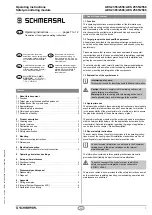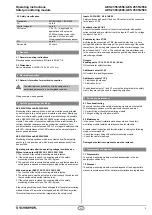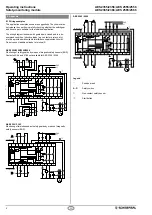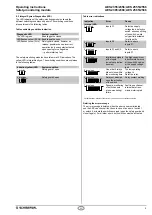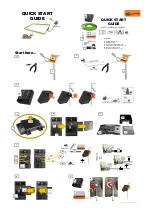
3
EN
AES 2355/2356; AES 2555/2556
AES 2365/2366; AES 2565/2566
Operating instructions
Safety-monitoring module
2.5
Safety classiication
Standards:
EN ISO 13849-1; IEC 61508
PL:
up to d
Control category:
up to 3
PFH value:
1.0 x 10
-7
/ h; applicable for
applications with up to max.
50,000 switching cycles / year
and max. 80 % contact load.
Diverging applications upon request.
SIL:
up to 2
Service life:
20 years
3 Mounting
3.1 General mounting instructions
Mounting: snaps onto standard DIN rails to EN 60715.
3.2 Dimensions
Device dimensions (H/W/D): 100 x 45 x 121 mm
4 Electrical connection
4.1 General information for electrical connection
The electrical connection may only be carried out by
authorised personnel in a de-energised condition.
Wiring examples: see appendix
5 Operating principle and settings
AES 2355/2356 and AES 2555/2556
Monitoring of two safety switches, which are simultaneously actuated
by a safety guard (e.g. safety guard, diversitary actuation). Monitoring
of one or multiple safety guards in series-/parallel-wiring only possible
with a AES 2355/2356 and AES 2555/2556 series safety-monitoring
module. The number of connected safety switches is restricted by the
contract transition resistance and the conduction resistance. This
overall resistance must not exceed 300 Ω. For magnetic safety sensors
with LED, the brightness of the LED's reduce as the amount of guard
doors opened increases.
AES 2365/2366 and AES 2565/2566
Monitoring of safety switches, which are actuated by different safety
guards (e.g. two guard doors, which are opened independently from
one another).
Operating principle after the operating voltage is switched on
Without start-up test AES 2355 / 2555 / 2365 / 2565
1. The function of the safety-monitoring module is tested.
2. If the safety guard is closed, the enabling path of the safety-
monitoring module will close. The LED is green.
3. The cable and the connected safety switch are only tested when the
safety guard is opened or the emergency stop button when actuated.
With start-up test AES 2356 / 2556 / 2366 / 2566
1. The function of the safety-monitoring module is tested.
2. The safety guard must be actuated, in order to check the cables and
the connected safety switch (start-up test).
3. If the safety guard is closed, the enabling path of the safety-
monitoring module will close. The LED is green.
If the safety guard is opened, the enabling path of the safety-monitoring
module will open.The machine is stopped and the LED lashes yellow.
This contact however must not be integrated in the safety circuit.
Inputs S1-S14/S22; S2-S14/S22
Safety switches with one NC and one NO contact must be connected
to the inputs S1/S2.
Feedback circuit X1/X2
Connect the feedback circuit of the external contactor with positive
action contacts and/or a start button to the inputs X1 and X2 or bridge
the inputs X1 and X2.
Enable delay time X7/X8
By bridging the connections X7/X8, the enable delay time (i.e. time
during which after the irst closing of the guard, bouncing of the switch
contacts or of the entire guard is possible without error message) can
be extended from 0.1 s to 1 s. The enable delay time simultaneously
is the minimum time, expiring between the guard being closed and the
relays being activated.
Outputs
Enabling paths 13-14, 23-24, 33-34, (43-44)
NO contacts for safety functions
Additional contact 51-52
NC contact for signalling purposes
Additional outputs Y1/Y2
Y1: indication "guard open"
Y2: indication "error"
The additional outputs Y1 and Y2 must not be integrated in the safety
circuit; they may only be used for signalling purposes.
6 Set-up and maintenance
6.1 Functional testing
The safety function of the safety-monitoring module must be tested.
The following conditions must be previously checked and met:
1. Correct itting of the safety-monitoring module
2. Fitting and integrity of the power cable
6.2 Maintenance
In the case of correct installation and adequate use, the safety-
monitoring module features maintenance-free functionality.
A regular visual inspection and functional test, including the following
steps, is recommended:
• Check the correct ixing of the safety monitoring module
• Check the cable for damage.
Damaged or defective components must be replaced.
7 Disassembly and disposal
7.1 Disassembly
The safety monitoring module must be disassembled in the de-
energised condition only.
7.2 Disposal
The safety monitoring module must be disposed of in an appropriate
manner in accordance with the national prescriptions and legislations.

